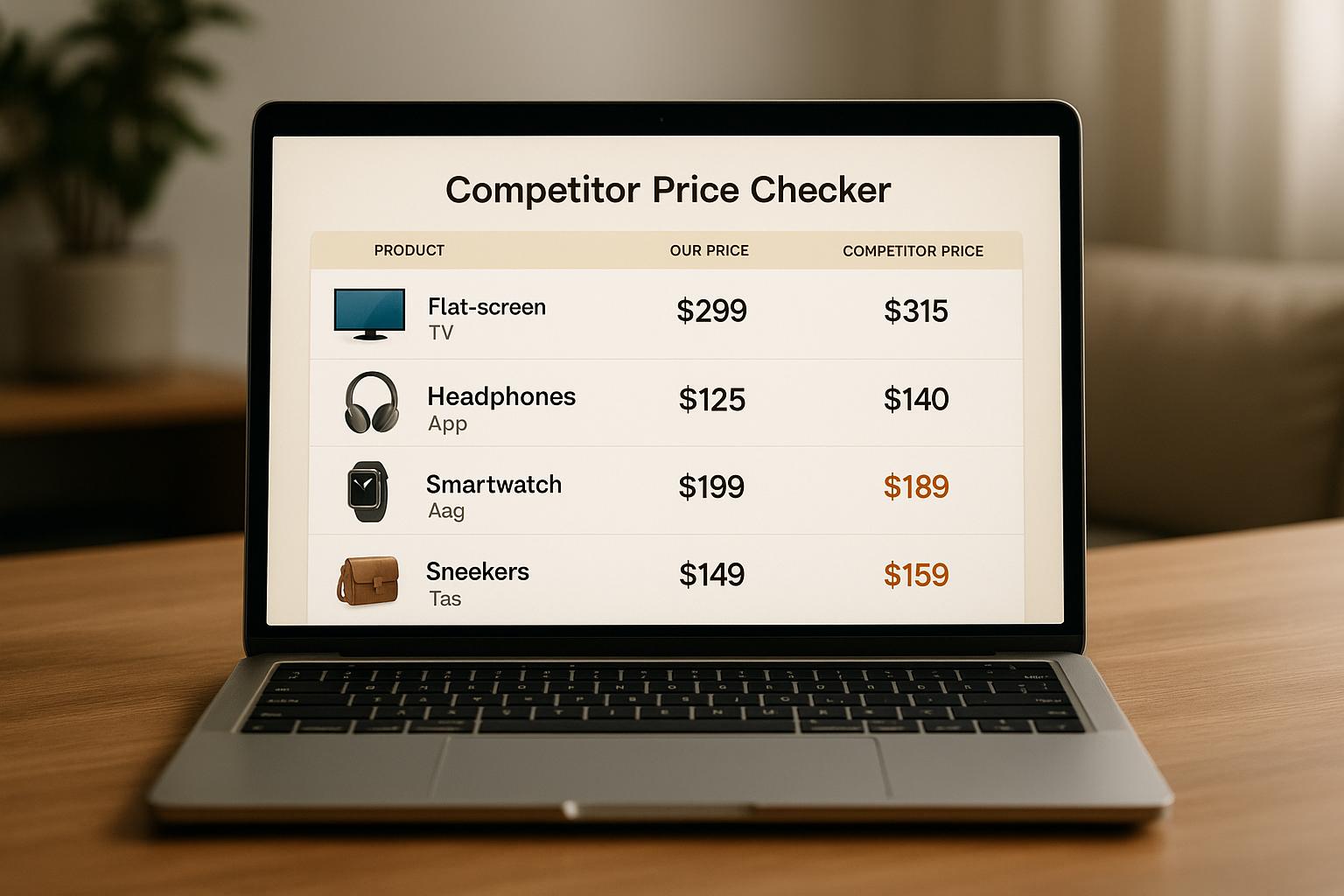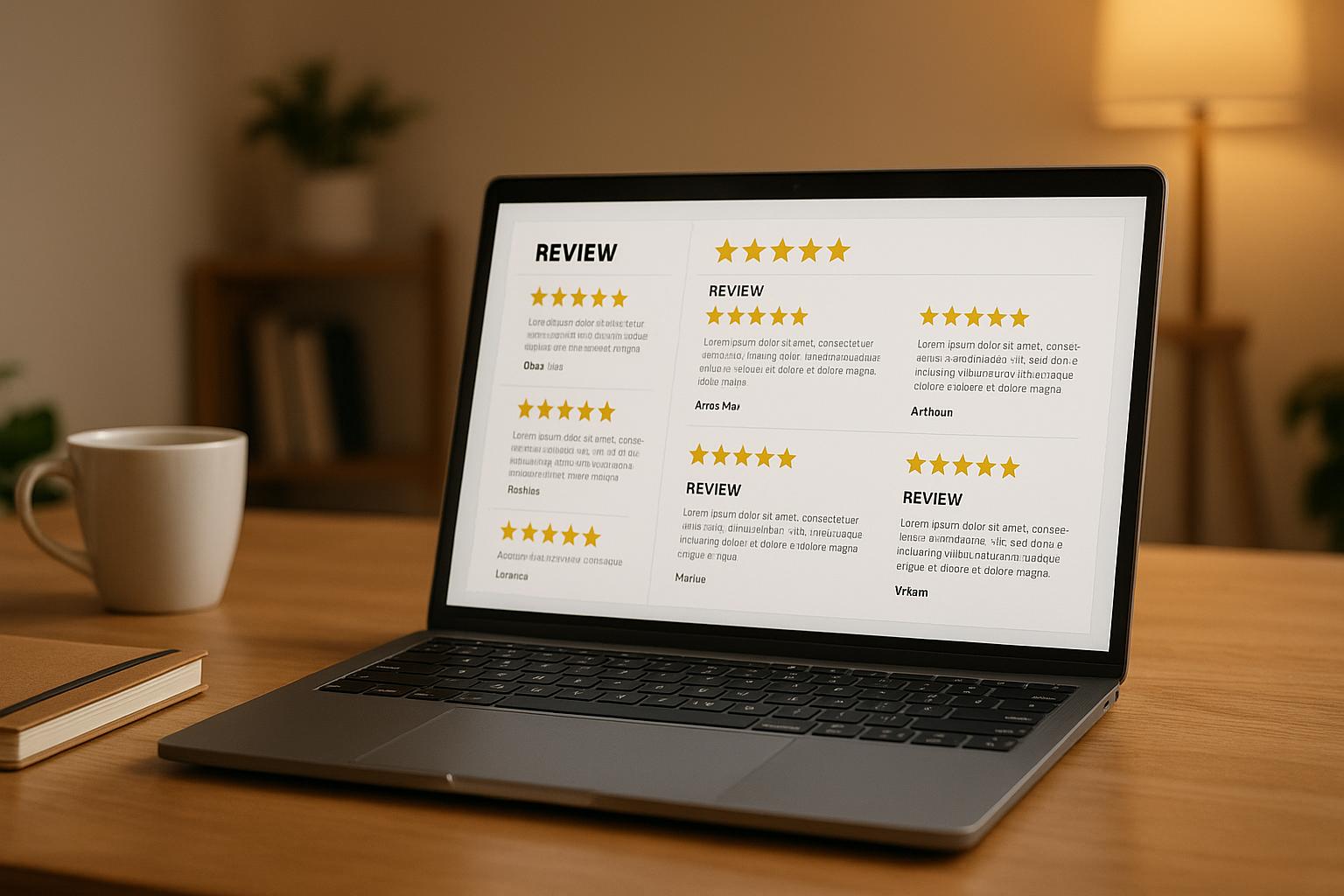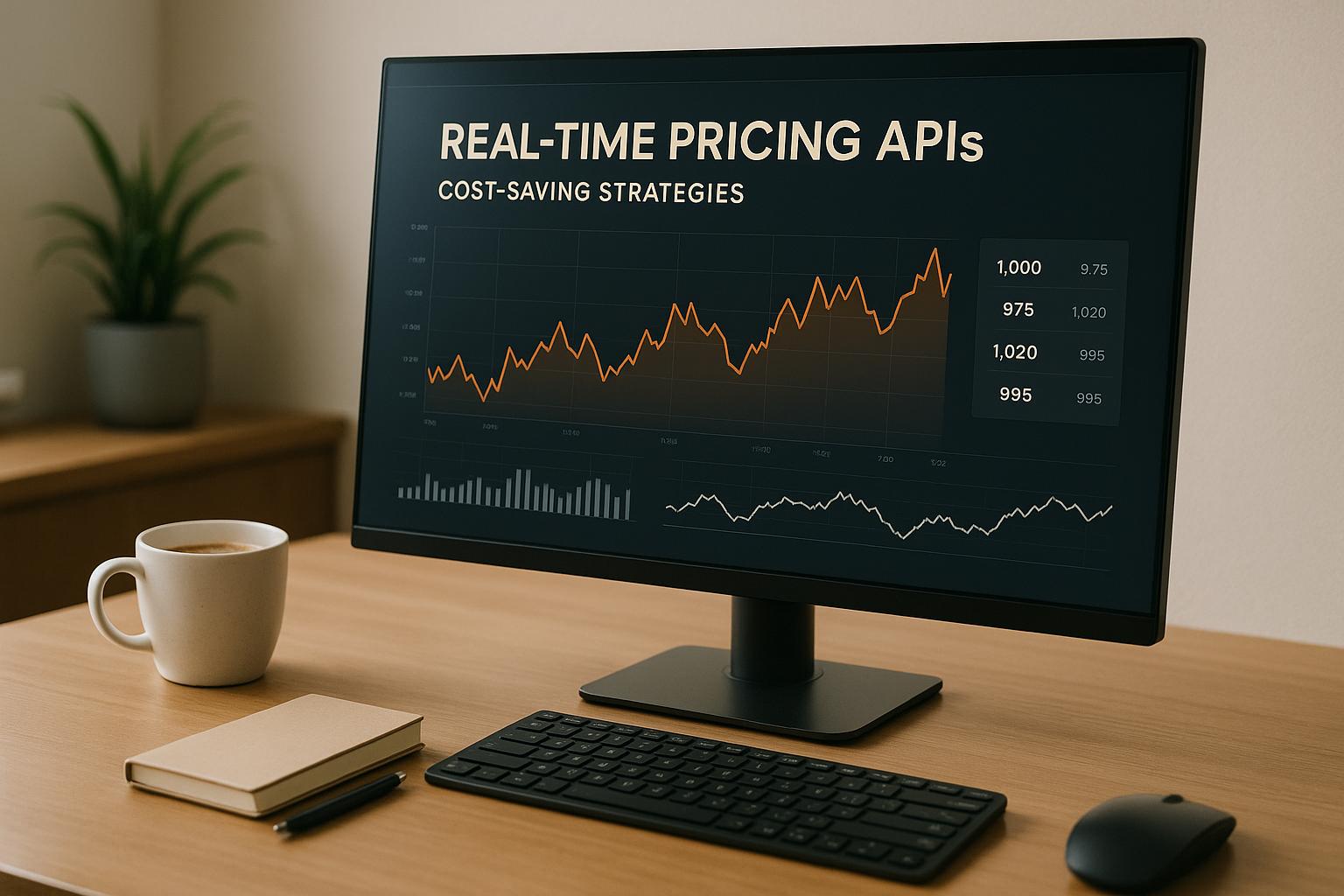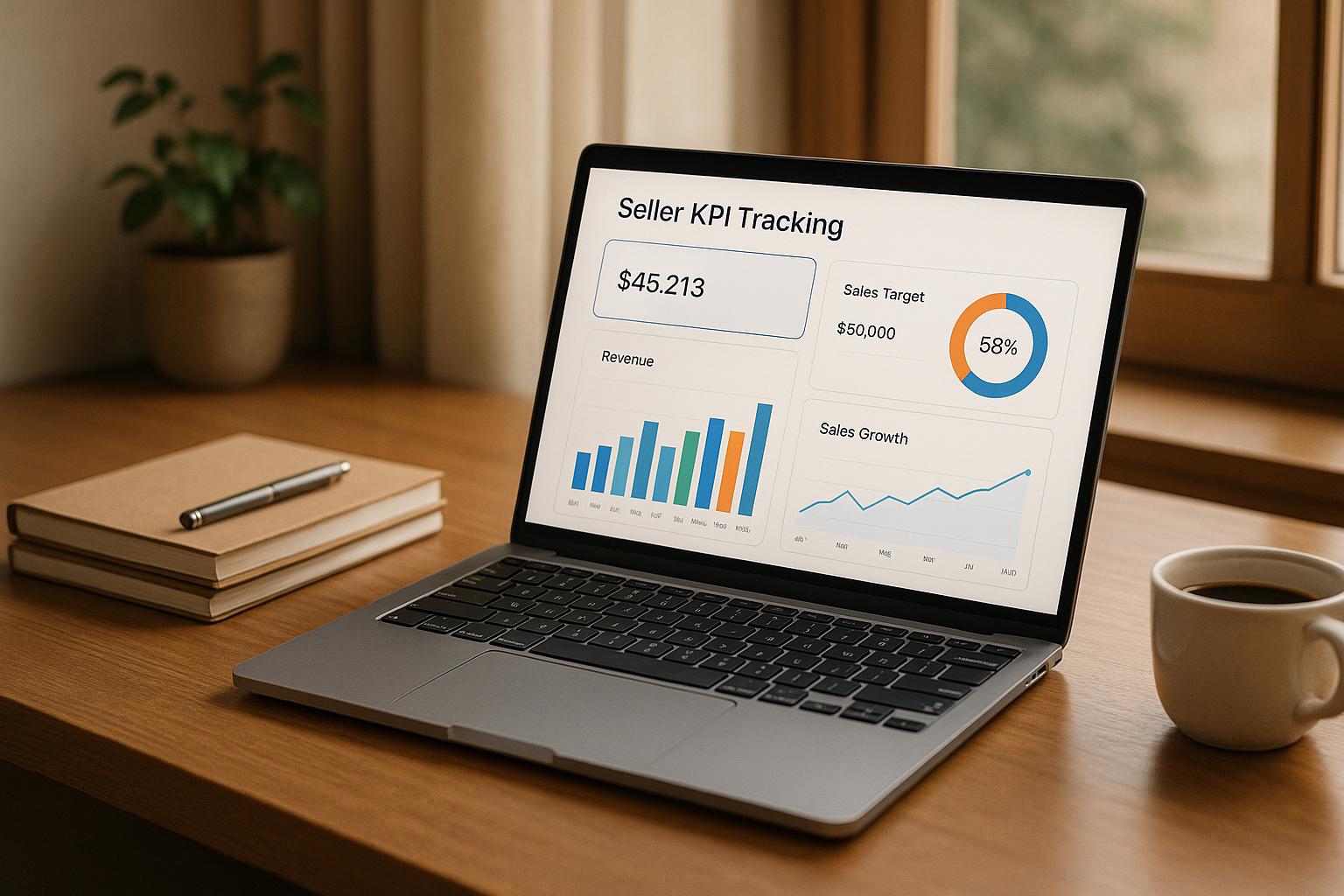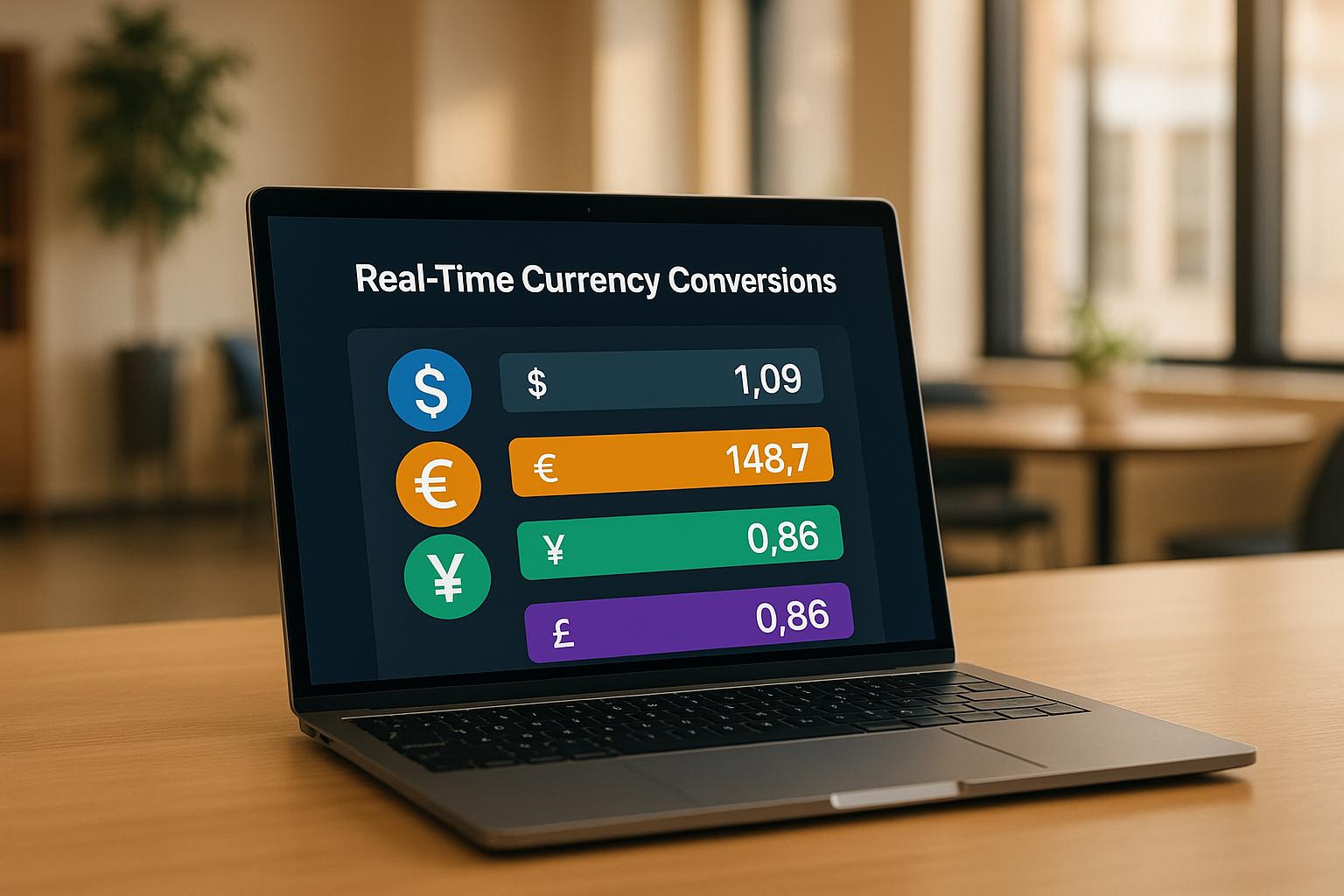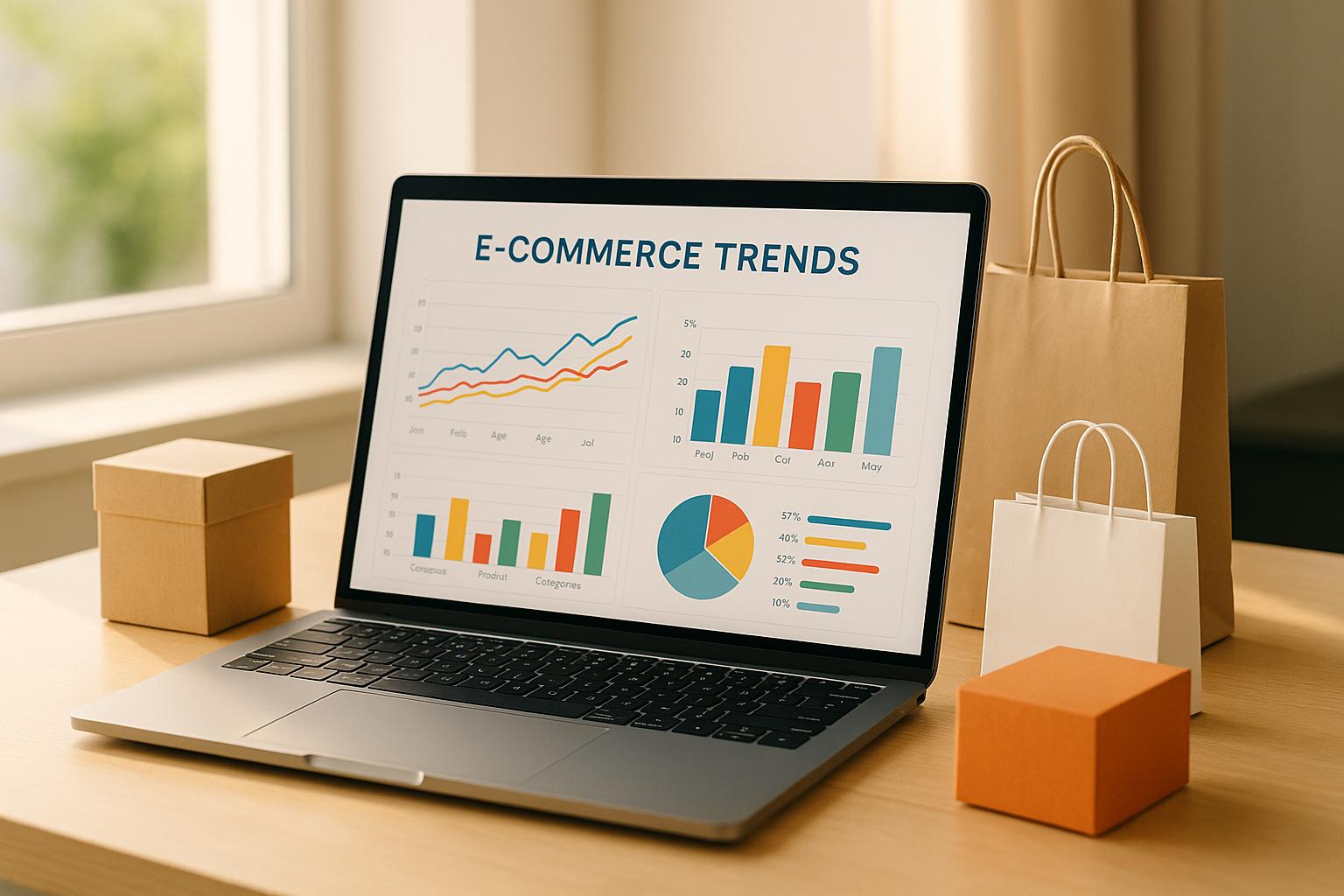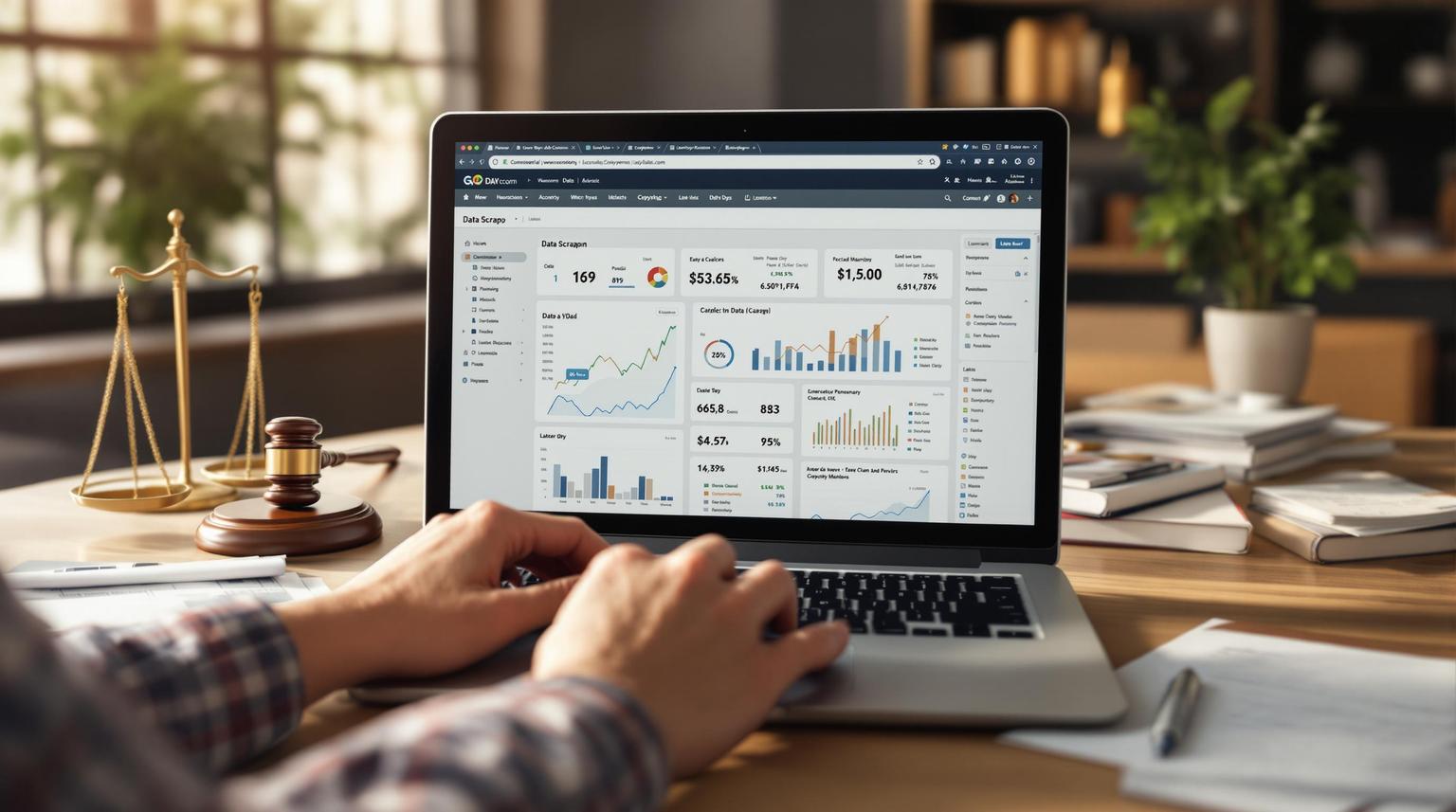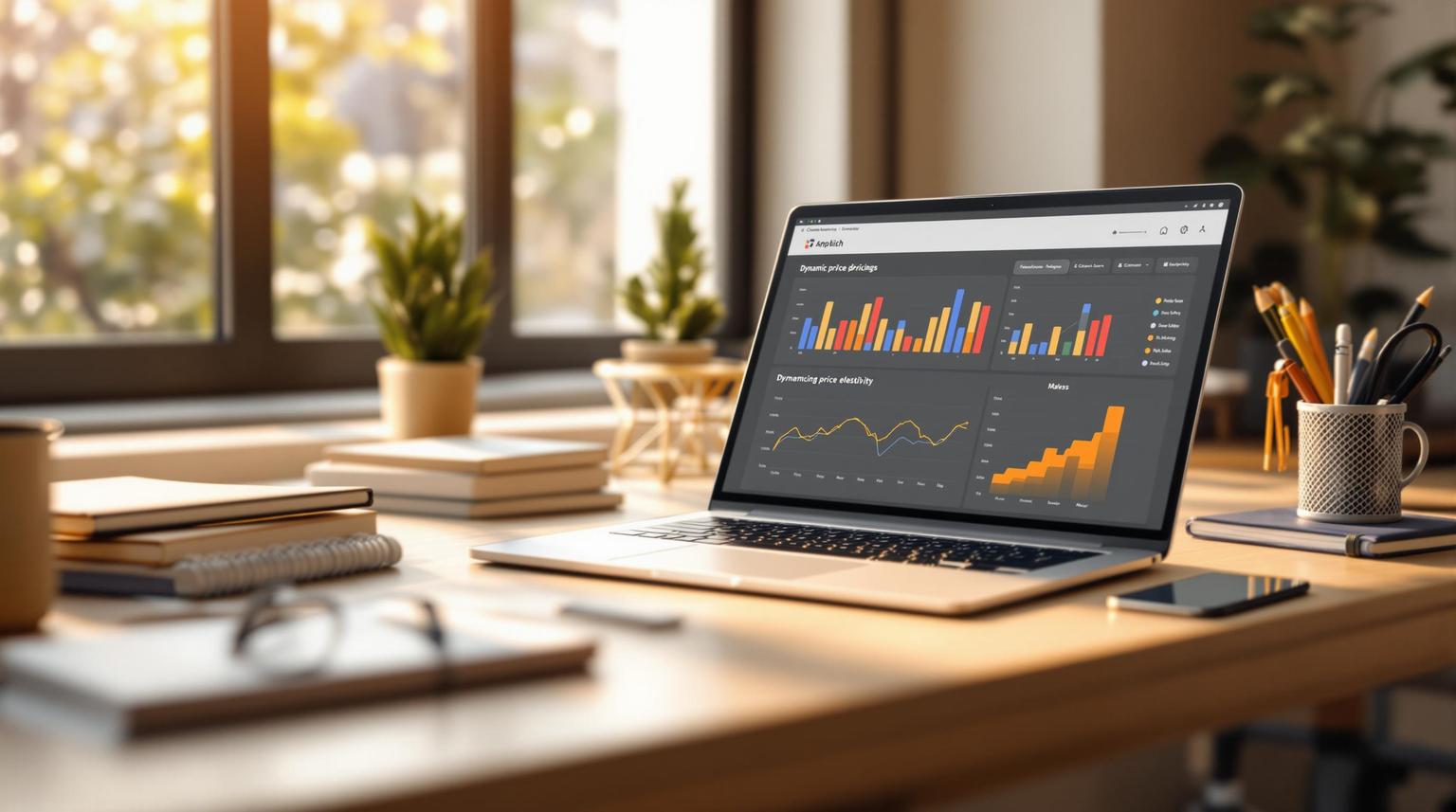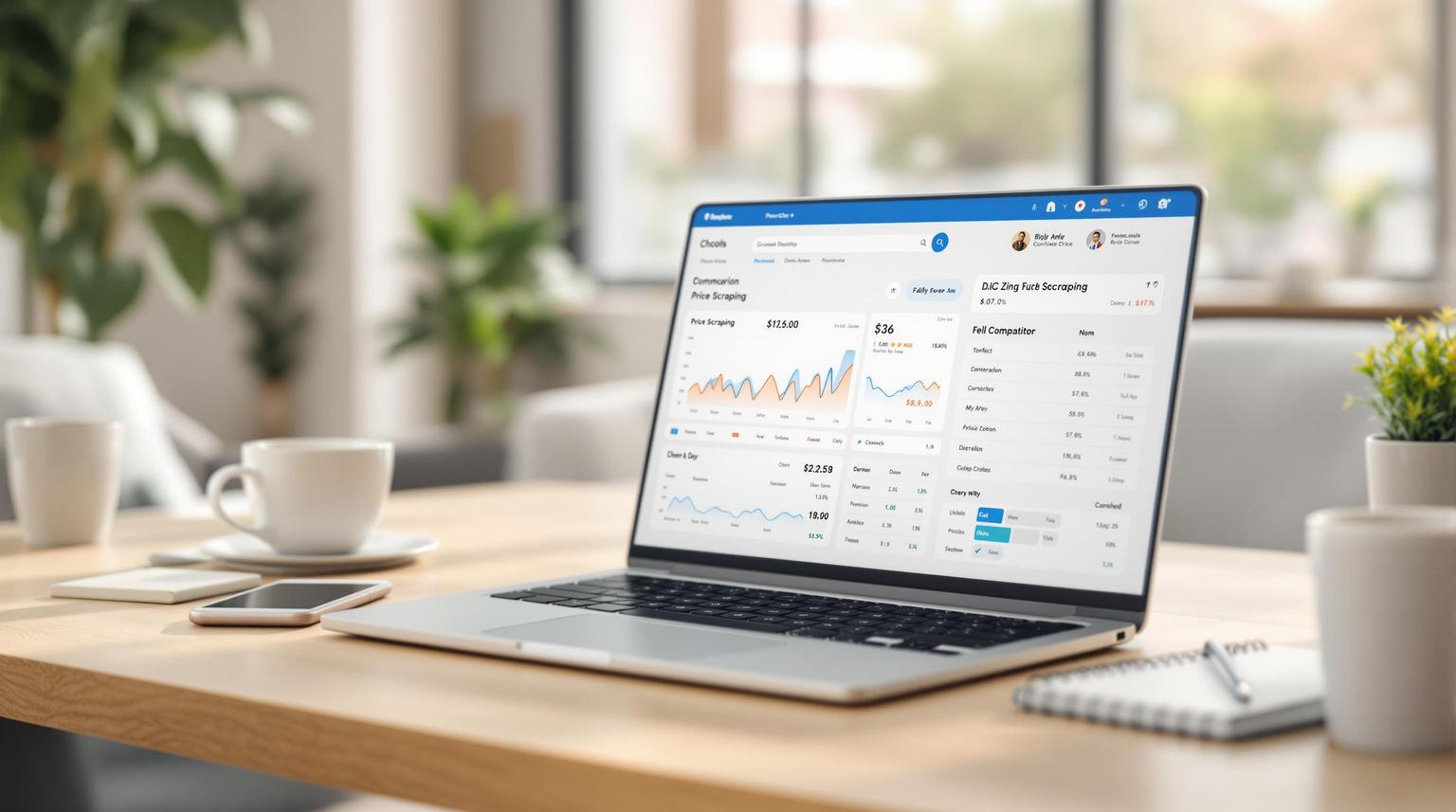Top AI Tools for E-commerce Data Scraping

July 7, 2025
AI tools are transforming e-commerce data scraping, offering speed, precision, and automation that traditional methods can't match. Whether you're tracking competitor prices, monitoring product availability, or gathering customer reviews, these tools simplify the process and save time.
Here are the top AI-powered tools for e-commerce data scraping:
- ShoppingScraper: Real-time data scraping with API integration, starting at $53/month. Covers platforms like Google Shopping and Amazon.
- ScrapeGraphAI: Simplifies scraping with natural language commands. Pricing starts at $20/month.
- Bright Data: Enterprise-grade solution with a vast proxy network. Pay-as-you-go pricing at $0.0015/record.
- Octoparse: No-code platform with pre-built templates for Amazon, eBay, and more. Plans start at $75/month.
- Browse AI: No-code tool with automated monitoring and custom robots. Free plan available; paid plans start at $49/month.
Quick Comparison
| Tool Name | Real-Time Scraping | API Integration | Automation | Supported Marketplaces | Pricing |
|---|---|---|---|---|---|
| ShoppingScraper | Yes | Yes | Yes | Google Shopping, Amazon | From $53/month |
| ScrapeGraphAI | Yes | Yes | Yes | Universal | From $20/month |
| Bright Data | Yes | Yes | Yes | 120+ platforms | $0.0015/record |
| Octoparse | Yes | Yes | Yes | Amazon, eBay, Walmart | From $75/month |
| Browse AI | Yes | Yes | Yes | Amazon, Best Buy, Etsy | Free, $49+/month |
These tools cater to different needs, from small startups to large enterprises. Choose based on your budget, technical requirements, and supported platforms.
What to Look for in AI E-commerce Scraping Tools
Before diving into the top AI tools for e-commerce scraping, it’s important to understand the features that define an effective solution. With 35% of websites relying on heavy JavaScript and IP blocking reducing scraping efficiency by 40%, the right tool must tackle these modern web challenges head-on.
Real-time data extraction is a must-have. E-commerce moves at lightning speed - prices change by the hour, inventory levels shift constantly, and competitors update their strategies overnight. Tools with real-time capabilities allow you to adapt quickly to these changes, keeping you one step ahead.
API integration streamlines data handling. Instead of manually downloading and importing files, tools with robust API support automate these processes, saving time and ensuring your data stays up-to-date without extra effort.
Anti-blocking measures separate professional-grade tools from basic ones. E-commerce platforms often use CAPTCHAs, IP blocking, and bot detection to guard against scraping. The best tools counter these defenses by rotating IP addresses, solving CAPTCHAs automatically, and mimicking human browsing behavior to avoid interruptions.
Automated scheduling ensures your data is refreshed regularly. By running scraping tasks during low-traffic periods, these tools avoid detection while maintaining a steady flow of updated information - essential for tracking thousands of products across multiple platforms.
Marketplace support is key for versatility. Whether you’re scraping data from Amazon, Shopify, or eBay, each platform has its quirks. Tools that handle dynamic pages, infinite scrolling, AJAX-loaded content, and JavaScript rendering save you time and effort during setup.
Data export flexibility determines how easily you can act on the information you collect. The best tools support multiple formats, such as JSON, CSV, Excel, or direct database connections, ensuring seamless integration with your analytics systems.
William Orgertrice, a Data Engineer at Tuff City Records, highlights the impact of these tools:
"Once AI web scraping tools came onto the market, I could complete [...] tasks much faster and on a larger scale. Initially, I would have to clean the data manually, but with AI, this feature is automatically included in my workflow."
Advanced filtering capabilities make your efforts more efficient by allowing you to extract only the data that matters. Whether you need to target specific product categories, price ranges, or seller types, these features ensure your datasets are actionable and relevant.
Compliance features are critical for avoiding legal issues. As regulations around data scraping grow stricter, tools that respect robots.txt files, implement rate limiting, and provide audit trails help you stay on the right side of the law.
Scalability is essential for businesses with growing needs. High-volume data extraction without performance dips ensures your scraping operations can grow alongside your market demands. With e-commerce projected to hit $8.1 trillion by 2026, having a tool that can scale is more important than ever.
1. ShoppingScraper
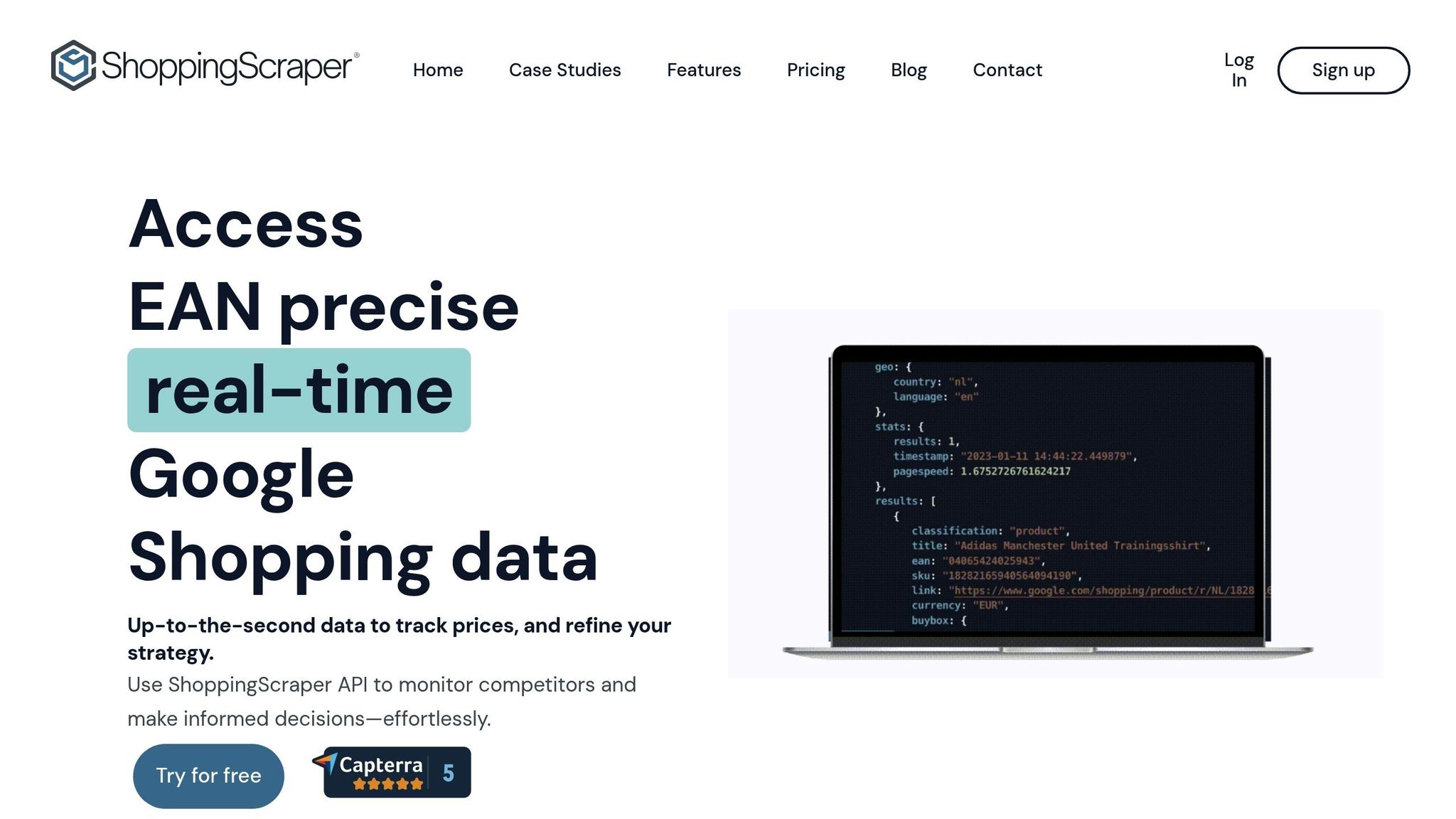
ShoppingScraper is a SaaS platform designed for e-commerce data extraction, trusted by leading agencies and businesses. With an impressive 4.8/5 rating across 11 reviews on Capterra and Software Advice, it provides precise, real-time data to support quick decision-making. Pricing starts at just $1.07 per month, with plans scaling up to over $800 per month. Let’s dive into the features that make ShoppingScraper a go-to tool for e-commerce data strategies.
Real-time Data Extraction
ShoppingScraper specializes in delivering real-time pricing and product insights, with API response times clocking in at under 4 seconds. Recent updates to its Google Shopping API have boosted performance by 25%, all while maintaining a 99% uptime.
Job van der Geest from Marketing Intelligence VML Netherlands highlights its effectiveness:
"The data comes from Google Shopping, where we collect pricing data on an EAN-level. This means we capture every variant, color, and size - updated throughout the day."
This level of detail ensures businesses get comprehensive, up-to-date product information, which is critical for staying competitive in a fast-moving market.
API Integration
ShoppingScraper offers a RESTful API that makes it easy to integrate real-time pricing data directly into your systems. The API supports EAN-based searches for pinpoint product identification and is backed by detailed documentation and responsive support. Users have consistently praised its reliability and ease of use, making it a favorite for developers and teams alike.
Automation Capabilities
Automation is another standout feature. The Scheduler tool allows users to automate data collection at intervals - hourly, daily, or weekly - tailored to their needs. Additionally, the platform integrates seamlessly with Google Sheets for those who prefer spreadsheet-based workflows.
Toon Hendrikx, Founder & CEO of 10XCREW, shares how it has impacted his business:
"ShoppingScraper has been vital, enabling our agency to collect large-scale, actionable data for improved advertising, pricing, and inventory decisions, leading to increased sales and profits."
Supported Marketplaces
ShoppingScraper provides extensive coverage of major e-commerce platforms, including Google Shopping (across 40+ countries), Amazon, bol.com, and Coolblue. The number of supported marketplaces depends on your subscription plan: the Growth plan includes access to 2 marketplaces, while the Enterprise plan covers up to 5.
Using advanced EAN/GTIN matching algorithms alongside title and URL matching, the platform ensures accurate product identification across different marketplaces. This broad coverage allows businesses to monitor competitor pricing, refine their strategies, and gather comprehensive market intelligence for better decision-making.
In short, ShoppingScraper equips businesses with the tools they need to stay ahead in the ever-changing e-commerce landscape.
2. ScrapeGraphAI

ScrapeGraphAI is an AI-driven platform designed to simplify data extraction using natural language commands. Created by Marco Vinciguerra, this tool has already processed an impressive 22 million webpages. It offers a streamlined approach to e-commerce data collection, with pricing starting at $20/month for the Starter plan, alongside custom Enterprise options for larger needs.
Automation Capabilities
One of ScrapeGraphAI's standout features is its ability to significantly reduce the complexity of coding. While traditional web scraping typically requires 200–300 lines of code, this platform accomplishes the same tasks with fewer than 20 lines. This efficiency is powered by an intelligent AI engine that not only identifies key data points but also adapts to website changes without requiring manual adjustments.
Marco Vinciguerra, the founder, shared his vision for the platform:
"I think that ScrapeGraph will make data accessible to everyone, not just for engineers or developers."
Beyond basic scraping, ScrapeGraphAI can track competitor pricing, monitor product availability, and collect detailed insights into competitors' products and marketing strategies. In June 2025, Made By Agents highlighted how users could extract data from hundreds of Amazon products, keep tabs on competitor prices, and analyze top-performing YouTube content - all with a single prompt. This simplicity extends seamlessly to its API integration capabilities.
API Integration
ScrapeGraphAI integrates with platforms like Make.com and n8n via API calls, making it easier to create efficient data pipelines. Its Smart Scraper service allows users to extract structured data from a URL or HTML content through RESTful API endpoints. For businesses with more extensive needs, the Enterprise version supports crawling multiple interconnected websites, offering a robust solution for gathering in-depth marketplace intelligence.
Real-time Data Extraction
The platform excels in real-time data collection by using natural language instructions combined with AI that automatically adapts to website changes. This capability ensures reliable extraction of product details, prices, and reviews from e-commerce sites. Its adaptive technology guarantees a steady flow of data, which is essential for tasks like real-time pricing updates and inventory management.
Supported Marketplaces
Thanks to its flexible architecture, ScrapeGraphAI can extract data from virtually any e-commerce platform. It helps businesses monitor brand reputation by collecting customer reviews and track competitor pricing to stay on top of market trends. Its ability to adapt to website changes ensures consistent and reliable data collection, no matter the marketplace. This makes it an invaluable tool for businesses operating across a variety of e-commerce ecosystems, providing the insights needed for comprehensive market analysis.
3. Bright Data

Bright Data is a robust data extraction platform trusted by over 20,000 customers worldwide. Handling massive amounts of data daily, Bright Data uses advanced technology to address the growing needs of e-commerce data collection. It’s an enterprise-grade solution offering a full suite of tools for managing high-volume data collection.
The platform boasts access to more than 150 million proxy IPs spanning 195 countries. Combining a sophisticated proxy infrastructure with powerful scraping tools, it’s ideal for businesses needing to gather data at scale across multiple marketplaces.
Real-time Data Extraction
One of Bright Data’s standout features is its ability to deliver up-to-date information on demand through its advanced scraping infrastructure. With the eCommerce Scraper API, businesses can instantly extract details like trending products, pricing information, and customer reviews. The system handles bulk requests efficiently, managing up to 5,000 URLs at once. Its unblocking technology automatically bypasses anti-scraping defenses and solves CAPTCHAs without requiring manual input. Additionally, businesses can save costs by using its filtering options to retrieve only the specific data they need from pre-collected datasets.
API Integration
Bright Data provides a high-performance API suite that supports API Access and Native Access, including a Proxy API for automating proxy management through HTTP requests. The API is compatible with popular programming languages and comes with detailed documentation for developers.
"Bright Data's browser infrastructure helps scale our AI agents for complex tasks. It lets us focus on delivering real value to our customers instead of wrestling with browser infrastructure." - Devi Parikh, Co-Founder, Yutori
The platform also integrates seamlessly with enterprise tools like Snowflake and AWS, making it easy to incorporate scraped data into existing analytics workflows. Users can choose between HTML and JSON output formats, and secure access is ensured through API key authentication. With these features, Bright Data enables enterprises to automate data collection processes effectively.
Automation Capabilities
Automation is another key strength of Bright Data, eliminating the need for businesses to build and maintain their own scraping infrastructure. Its Browser API supports Puppeteer, Selenium, and Playwright scripts on fully hosted browsers, complete with automated proxy management and CAPTCHA-solving capabilities. The eCommerce Scraper API allows users to create custom schedulers to control how often data is collected, automatically delivering structured data to preferred storage locations. This serverless setup enables companies to develop dynamic scrapers without the technical hassle.
Pricing for the Browser API starts at $8.40 per GB on a pay-as-you-go basis, while the eCommerce Scraper API begins at $1.50 per 1,000 records. Enterprise plans offer discounted rates for high-volume users, with the Premium eCommerce plan costing $0.79 per 1,000 records at $1,999 per month.
Supported Marketplaces
Bright Data complements its technical capabilities with broad marketplace coverage. It provides tools for gathering AI-driven insights on any product from any source. Pre-built scrapers and crawling endpoints make it easy to collect data like competitor prices, product details, and customer reviews across various marketplace formats, all without requiring custom development.
The platform prioritizes ethical and compliant data collection, adhering to GDPR and CCPA regulations. This commitment to compliance aligns with the industry’s focus on responsible AI scraping, making Bright Data a reliable choice for enterprises needing to maintain strict data governance while gathering marketplace intelligence. Whether through API-based solutions or no-code scrapers, Bright Data caters to organizations with varying levels of technical expertise.
4. Octoparse

Octoparse stands out as a no-code web scraping platform designed to simplify even the most complex data extraction tasks. Its intuitive drag-and-drop interface allows users to create scrapers by simply navigating through web pages, making it a go-to tool for businesses looking to streamline e-commerce data collection. With over 1.2 million users globally, Octoparse provides a hassle-free solution for companies needing quick adaptability in a fast-paced market.
Real-time Data Extraction
Octoparse offers 24/7 cloud-based scraping, delivering data 6–20 times faster than traditional methods. This speed is paired with the ability to schedule real-time data scraping, making it ideal for businesses that rely on up-to-the-minute market analysis. For instance, e-commerce companies can monitor competitor pricing and inventory fluctuations, enabling them to adjust strategies on the fly.
"Octoparse is phenomenal and known for its large-scale and real-time data scraping. Scraping from many websites be it JavaScript, AJAX, or other dynamic web sources. We can guarantee that every user will enjoy its unique features."
– Kehinde Okunola, M.sc in Geography, University of Ibadan, Nigeria
These insights can be seamlessly integrated into automated workflows, ensuring businesses stay ahead of market trends.
Automation Capabilities
Automation is where Octoparse truly shines. It offers features like automatic data export and OpenAPI support, allowing businesses to set up workflows that operate independently, removing the need for manual data collection. The platform’s RPA tools cover the entire data pipeline - from extraction to analysis and export. Additionally, its AI-powered assistant simplifies the scraper creation process with smart tips and auto-detection capabilities, making it easier to tackle complex data tasks.
API Integration
Octoparse supports OpenAPI integration, making it easy for businesses to feed scraped data directly into their existing systems. The platform exports data in multiple formats, including CSV, Excel, HTML, TXT, and even directly into databases. This flexibility ensures compatibility with a wide range of business intelligence tools and e-commerce platforms. Real-time API integration allows companies to automatically update inventory systems, pricing databases, and competitive analysis dashboards, keeping operations running smoothly without manual intervention.
Supported Marketplaces
Octoparse also provides extensive support for major e-commerce platforms through its preset templates. These templates allow users to extract data instantly, with no setup required. For example:
- Amazon Scraper: Gathers product ASINs, names, and prices by keywords.
- eBay Scraper: Captures details like store names, URLs, titles, prices, conditions, follower counts, and sales data.
- AliExpress Scraper: Extracts item names, prices, and ratings by keywords, perfect for international markets.
- Tokopedia Scraper: Collects product details, pricing, ratings, and sales numbers.
Pricing for Octoparse starts with a free plan for basic projects, while paid plans begin at $75 per month for the Standard plan and $208 per month for the Professional plan. This tiered pricing structure makes it accessible to both startups and larger enterprises.
sbb-itb-65e392b
5. Browse AI

Browse AI is a no-code web scraping tool designed to turn any website into structured data. It works seamlessly across both major and niche e-commerce platforms, making data extraction possible without requiring technical skills.
Automation Capabilities
Browse AI allows users to create custom robots that can extract specific data and handle up to 500,000 pages simultaneously. This makes it a great fit for large-scale e-commerce monitoring.
The platform also monitors websites for changes and can trigger automated actions based on updates. For example, businesses can set up workflows to track competitor price changes. When a change is detected, Browse AI can automatically update Google Sheets and send alerts via Slack.
API Integration
Browse AI goes beyond automation with strong connectivity features. Its REST API enables businesses to build custom integrations for managing robots, running tasks, and tracking extraction results. Additionally, it connects with over 2,700 apps through Pipedream.
Some key integration partners include Google Sheets, Zapier, Airtable, Pabbly Connect, and Make.com. Use cases include monitoring content changes on industry news sites and automatically sending summaries to marketing teams via Gmail. Another example is restocked product alerts: Browse AI can check e-commerce sites for stock updates and, through integration with Twilio, send SMS notifications to customers when desired products become available.
Supported Marketplaces
Browse AI supports a variety of marketplaces with ready-to-use robots for popular platforms like Amazon, Best Buy, Etsy, and Trendyol [56,57]. These prebuilt robots allow users to start extracting data immediately.
For more specialized needs, Browse AI’s real strength lies in its flexibility. Users can build and train custom robots to extract data from niche or specialized platforms. The platform can handle virtually any visible data, including product prices, contact details, real estate listings, job postings, competitor updates, and market research. This makes it an excellent tool for conducting in-depth competitive analysis across multiple channels.
Feature Comparison Table
The table below highlights the core features, pricing, and benefits of each AI-powered e-commerce data scraping tool, making it easier to compare their offerings side-by-side.
When selecting a tool for your e-commerce scraping needs, evaluating their capabilities side-by-side is essential. Below, you'll find a breakdown of key features, pricing, and benefits for the tools we've reviewed.
| Tool Name | Real-Time Scraping | API Integration | Automation | Supported Marketplaces | Data Export Formats | Pricing (USD) | Key Benefits |
|---|---|---|---|---|---|---|---|
| ShoppingScraper | Yes, EAN-precise real-time Google Shopping data | Real-time API integration enabling scheduled scraping | Yes, schedule scrapes | Google Shopping, Amazon, bol.com, Coolblue | JSON, CSV | Starting at $53/month | User-friendly interface, accurate data extraction |
| ScrapeGraphAI | Yes | Yes | Yes, scraping pipelines | Universal website support | XML, HTML, JSON, Markdown | $0 - $500/month | AI-powered natural language prompts, structured data output |
| Bright Data | Yes | Yes | Yes | 120+ domains including major e-commerce platforms | JSON | Starting at $0.0015/record | Comprehensive proxy network, enterprise-grade infrastructure |
| Octoparse | Yes | Yes | Yes, cloud-based scheduling | Amazon, eBay, Walmart, Google Shopping | CSV, JSON, Excel | $119 - $299/month | No-code interface, pre-built templates |
| Browse AI | Yes | Yes | Yes, automated monitoring | Amazon, Best Buy, Etsy, custom platforms | Spreadsheet, API | $0 - $249/month | Easy point-and-click setup, handles up to 500,000 pages |
Key Takeaways
- Pricing: ShoppingScraper starts at $53/month, ScrapeGraphAI offers a flexible range from free to $500/month, Bright Data uses a pay-per-record model at $0.0015/record, and Browse AI offers plans from free to $249/month.
- Automation: All tools provide automation, but the implementation varies. For instance, Browse AI focuses on monitoring changes, like competitor price shifts, triggering actions automatically.
- Data Export: Most tools support JSON and CSV formats, but some, like ScrapeGraphAI, go further by offering XML, HTML, and Markdown.
- Marketplace Coverage: ShoppingScraper specializes in platforms like Google Shopping and Amazon, while tools like Browse AI allow custom robot-building for universal support.
Use this comparison to pinpoint the solution that aligns best with your e-commerce scraping requirements. Each tool brings unique strengths to the table, ensuring there's an option for every need.
Conclusion
Choosing the right AI-powered data scraper is a critical step for aligning with your business goals, technical needs, and future growth. With the AI-driven web scraping market expected to surge from $7.48 billion in 2025 to $38.44 billion by 2034, making a well-informed decision now can set your business up for long-term success.
As data demands grow, businesses require tools that are fast, scalable, and compliant with regulations. Whether your needs involve processing thousands of product listings daily or handling smaller, more focused tasks, scalability and accuracy are non-negotiable. Additionally, compliance with GDPR, CCPA, and adherence to robots.txt directives is essential, especially as regulatory oversight in data collection tightens.
Budgeting is another key consideration. Look closely at pricing models - whether fixed monthly fees or pay-per-record structures - and calculate the total cost of ownership based on your expected data volumes and desired features.
"Prioritize ease of use, flexible data extraction, and strong customer support during implementation." – GreenHost, Author at greenhost.cloud
Integration capabilities are equally important. Ensure the tool you choose fits seamlessly into your existing workflow. Features like API integration, automated scheduling, and support for data export formats such as JSON, CSV, or Excel should align with your current systems and processes.
Take advantage of free trials to test tools in real-world scenarios. This hands-on testing helps you evaluate how well each solution meets your specific data needs and adapts to the constantly changing landscape of e-commerce websites.
Each tool caters to different business profiles. Whether your priority is real-time data accuracy, support for a wide range of websites, or robust enterprise-level infrastructure, selecting a solution that aligns with your goals ensures efficient data collection and maximizes your return on investment.
FAQs
How do AI-powered e-commerce scraping tools handle challenges like dynamic websites and blocking mechanisms?
AI-driven e-commerce scraping tools tackle the hurdles of dynamic, JavaScript-heavy websites by employing headless browsers. These browsers mimic real user behavior, executing JavaScript and rendering dynamic elements, which ensures precise data extraction.
To counter IP blocking, these tools rely on methods like IP rotation, proxy management, and user-agent rotation. By imitating various users and locations, they reduce the chances of detection and maintain consistent access to target sites. These approaches enable businesses to collect data effectively, even from highly complex or well-guarded e-commerce platforms.
What should I look for in an AI tool for e-commerce data scraping?
When selecting an AI tool for scraping e-commerce data, prioritize tools that are user-friendly, can handle large-scale tasks, and work seamlessly with both static and dynamic websites. Features like proxy support, anti-ban measures, and accurate data targeting are key to ensuring smooth and efficient data extraction.
It's also helpful to choose tools offering automated scheduling, API integration, and the ability to export data in multiple formats, such as JSON or CSV, to simplify your workflow. Strong customer support and the capability to extract detailed information - like pricing and product specifics - are crucial for keeping an eye on competitors and gaining valuable market insights.
What steps can businesses take to ensure legal compliance when using AI tools for e-commerce data scraping?
Legal Compliance in AI-Powered E-Commerce Data Scraping
When using AI tools for e-commerce data scraping, staying within legal boundaries is a must. Laws and regulations around this practice differ depending on the region, so businesses need to familiarize themselves with the specific rules that apply to their operations. Ethical practices should guide every step - this means respecting robots.txt files, steering clear of unauthorized access, and securing explicit consent when it's required.
Privacy is another critical area to focus on. Companies should adopt measures like data anonymization and other privacy-preserving techniques to protect personal information. Keeping up with changes in data protection laws and seeking advice from legal professionals can reduce risks and help maintain compliance. Regularly reviewing and updating your scraping methods is a smart way to avoid running into legal trouble.
Related Blog Posts












